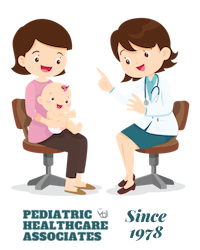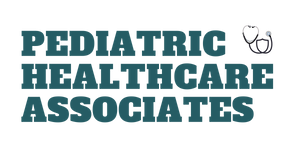Understanding Food Allergies and How to Manage Them Effectively

Food allergies are a growing concern among parents, as they can cause a wide range of reactions, from mild discomfort to severe, life-threatening conditions such as anaphylaxis. These allergic responses occur when a child's immune system mistakenly identifies certain proteins in food as harmful, triggering a defensive reaction. While some children may only experience minor symptoms like hives, itching, or digestive issues, others may develop more serious conditions, including difficulty breathing, swelling, and even anaphylactic shock, which requires immediate medical attention.
Approximately 5% of children suffer from food allergies, making it a prevalent health issue that requires careful management. Some of the most common allergens include peanuts, tree nuts, milk, eggs, soy, wheat, fish, and shellfish. However, food allergies can also be linked to lesser-known triggers such as sesame or certain fruits and vegetables. In some cases, children may develop Oral Allergy Syndrome (OAS). In this condition, certain raw fruits and vegetables cause itching or swelling in the mouth due to cross-reactions with pollen allergies.
Early diagnosis and intervention are crucial in managing food allergies effectively. Parents should be aware of the signs and symptoms, as timely action can prevent severe reactions. Pediatric clinics in Altoona provide essential resources for diagnosing and treating food allergies in children. These clinics offer allergy testing, immunotherapy, and personalized dietary guidance to help families navigate food restrictions safely. Additionally, pediatric specialists work closely with parents to create emergency action plans, ensuring that children receive prompt care if they encounter an allergen.
Treatment for food allergies primarily involves avoidance of trigger foods, but in some cases, doctors may recommend oral immunotherapy, which helps desensitize the immune system over time. Parents must also educate their children about their allergies and ensure that caregivers, teachers, and other adults are well informed about potential risks and emergency procedures. Carrying an epinephrine auto-injector is vital for children with severe allergies, as it can be life-saving in the event of an anaphylactic reaction.
Prevention strategies, such as early introduction of allergenic foods under medical supervision, may help reduce the risk of developing food allergies. Ongoing research continues exploring new treatments and effective ways to manage these conditions. By seeking guidance from pediatric clinics in Altoona and staying informed about the latest advancements, parents can take proactive steps to safeguard their children's health and well-being.
What Are Food Allergies?
Food allergies occur when the immune system reacts abnormally to certain foods, treating them as harmful invaders. The reaction can manifest in minutes to hours after consuming the allergenic food, with symptoms varying in severity.
Common Symptoms
- Hives: The most common sign of a food allergy, appearing as raised pink bumps with pale centers, often accompanied by itching.
- Swelling: Facial swelling, including lips, tongue, or throat, is another typical reaction.
- Digestive Issues: Vomiting, diarrhea, and stomach cramps can occur after eating the offending food.
- Respiratory Symptoms: Runny nose, coughing, trouble breathing, or wheezing may indicate a more severe reaction.
- Anaphylaxis: A life-threatening condition characterized by difficulty breathing, swallowing, or a sudden drop in blood pressure. Immediate medical attention is crucial.
Oral Allergy Syndrome (OAS)
Oral Allergy Syndrome, also known as Pollen-Food Syndrome, is a milder form of food allergy. It occurs when the immune system reacts to proteins in raw fruits, vegetables, or certain seeds that are similar to pollen.
Symptoms of OAS
- Itching or tingling in the mouth
- Swelling of the lips, tongue, or throat
- Rapid onset after eating trigger foods
Common Triggers
- Fruits: Apples, bananas, cherries, melons, oranges, and peaches.
- Vegetables: Carrots, celery, potatoes, and tomatoes.
- Seeds: Sunflower seeds and fennel seeds.
While OAS symptoms are generally mild and resolve quickly, they can cause discomfort. Cooking these foods often neutralizes the proteins, making them safe to eat.
Treatment for OAS
- Rinse the Mouth: Use warm water to remove traces of the food.
- Apply a Cold Pack: To reduce swelling and itching, apply a cold pack to the lips or tongue.
- Use Allergy Medicine: A single dose of Benadryl can alleviate symptoms. Ensure the child is over one year old.
Managing Food Allergies
Immediate Treatment
For mild reactions like hives:
- Administer Benadryl every 4-6 hours (age-appropriate dosage).
- Switch to long-acting antihistamines like Zyrtec if hives persist for over two days.
- Use a cool bath to soothe itching but avoid causing a chill.
For severe reactions:
- If anaphylaxis is suspected (e.g., trouble breathing or swallowing), use an EpiPen immediately and call emergency services.
Preventing Future Reactions
- Avoid Trigger Foods: Identify and eliminate the problematic foods from your child’s diet.
- Read Labels Carefully: Look for hidden allergens in packaged foods.
- Communicate: Inform caregivers, teachers, and school staff about your child’s allergies and the necessary precautions.
- Educate Your Child: Teach them to recognize and avoid their allergens.
What to Expect After a Reaction
- Hives typically subside within six hours with treatment.
- Mouth itching from OAS resolves in 1-2 hours.
- Children can resume normal activities, including school, once symptoms improve, as hives and OAS are not contagious.
When to Call the Doctor
Seek medical attention if:
- Symptoms escalate, such as difficulty breathing or severe swelling.
- Hives persist for more than 24 hours despite treatment.
- New symptoms develop, such as vomiting or severe stomach cramps.
Causes and Cross-Reactions of Food Allergies
Top Allergenic Foods
- Cow’s milk
- Eggs
- Peanuts and tree nuts
- Fish and shellfish
- Wheat
- Soy
Cross-Reactions
- Cow’s milk allergy often overlaps with goat’s milk allergy.
- Peanuts may cross-react with other legumes like peas or beans.
- Shellfish allergies can extend to multiple types of shellfish, such as shrimp and lobster.
Can Allergies Be Outgrown?
Many children outgrow food allergies:
- Milk, Soy, and Egg Allergies: 70-80% outgrow them by age 16.
- Peanut and Tree Nut Allergies: Less likely to be outgrown; only 20% and 10%, respectively, do so.
A Final Note on Prevention
While allergic diseases cannot be entirely prevented, certain practices can reduce risks:
- Breastfeeding exclusively for six months is beneficial.
- Introducing solid foods, including high-risk ones like peanuts and eggs, at around six months may help build tolerance.
Takeaway
Understanding food allergies and how to manage them empowers parents to keep their children safe and healthy. By recognizing symptoms, taking appropriate action, and implementing preventive measures, you can navigate food allergies with confidence. Remember, always consult a doctor for guidance tailored to your child’s needs.




